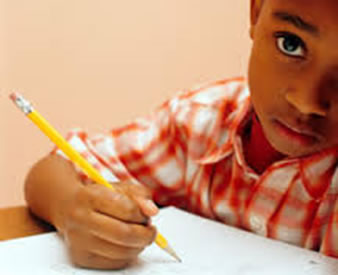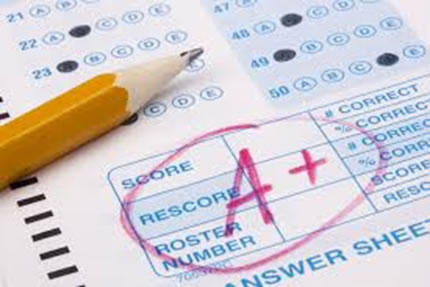by Abdinur Mohamud, Ph.D.
Friday, February 28, 2014
A recent news article on the Toronto Star regarding demonstrations by Somali community members in Toronto against the Toronto District School Board (TDSB) on policy affecting children of Somali descent left me with a mixed feeling. At one level, I was elated to see Somali immigrants exercising their newly found democratic rights as Canadian citizens; and on the other hand, I felt bewilderment at the core issues discussed, as it rings true, and may soon affect other Somali communities in the West. In fact, Canada may already be a trend-setter in so many ways, due to the sheer size of the Somali population, its experience and longevity there. And in that sense, one might say to the Somali Diaspora community--whatever happens in Toronto may soon be coming to a theater near you!
The purpose of this article is not to prosecute the merits of the issues debated in Toronto, but to critically highlight the fact that Somalis—whether one likes or not, are a natural unit of analysis as is race or gender, country or region and it is generally valid and relevant to investigate their state of affairs as a group. How do Canadian students compare to Americans on the Pisa international test is a question that many educators, parents and policy-makers often ask? And how do both compare to their peers in Finland or in Shanghai-China? Pisa (program for international student assessment) is a test participated by over seventy countries to evaluate knowledge and skills of 15 year olds.
Since we know how Canadian or American students perform in general, a natural question that begs to be asked is how community groups within this large society such as Italians, Indians, Pakistanis, Somalis and others fare? Are there success stories that need to be showcased or problem areas that need to be addressed?
 Honing on educational data from Toronto we learn that the following conclusions were reached about Somali-speaking students:
Honing on educational data from Toronto we learn that the following conclusions were reached about Somali-speaking students:
1. Based on 2006 cohort study data, self‐identified Somali‐speaking students graduate from secondary school at a lower rate than “all students”.
2. Self‐identified Somali‐speaking students apply and are accepted to post‐secondary educational institutions at rates lower than “all students”.
3. Self‐identified Somali‐speaking student males have a much greater chance of leaving school before graduation than do Somali‐speaking females.
4. Both Somali‐speaking male/females leave school before gradation at a higher rate than “all students”
5. Self‐identified Somali‐speaking students have a higher likelihood of being enrolled in “Applied” level courses than do “all students”.
6. For the 2006 grade 9 cohort, Somali‐speaking students were more likely to be suspended than “all students”
7. The older group of Somali‐speaking students had a higher likelihood of being identified as special‐Ed students then current students. (Source: TDSB).
These are worrisome trends that call for a comprehensive review and an honest conversation about the academic performance, behavioral issues and family supports of students of Somali descent and how they compare with their peers from other backgrounds. This is critical information to know going forward and the best line of defense against future labeling or fear of stigmatization.
 After numerous requests from some segments of the community, the TDSB proposed a special assistance program targeting and tailored around the academic and behavioral needs of students of Somali descent in an attempt to slow down and perhaps reverse these negative trends. The program is said to provide targeted scholarships, student mentoring, and a more focus on Somali culture and history in the school curriculum.
After numerous requests from some segments of the community, the TDSB proposed a special assistance program targeting and tailored around the academic and behavioral needs of students of Somali descent in an attempt to slow down and perhaps reverse these negative trends. The program is said to provide targeted scholarships, student mentoring, and a more focus on Somali culture and history in the school curriculum.
The issue regarding the demonstrations seems to me whether the TDSB should disaggregate student data by country of origin and as a result undertake specific remedial programs? Naturally, on one side of the debate, members feel that evidence is abound on the glaring dire need for academic and behavioral supports throughout the Toronto Somali community and that the Board’s action is not only warranted but desperately needed. On the other hand, equally concerned group of parents felt that the Board’s selective remedial program specifically targets students with Somali decent, without making any distinction between those who are successful in school and those who are struggling. The policy they contend may lead to the creation of an unnecessary social label affecting everyone with a Somali descent and thus may further stigmatize the community. The latter group effectively argues that the Board’s program should rather be focused only to all students in need of remedial services regardless of their cultural background. In essence, they worry about the potential far reaching negative effects of what the others keenly describe as well-intentioned policy.
Looking from a distance one would see the merits on both sides of the argument and in fact it is refreshing to read passionate conversation on both sides of the issue and I would add it is a debate that is worth having! This is because most Somalis are increasingly preoccupied with fast paced day-to-day events in their homeland and do rarely discuss social issues in the Diaspora and particularly how Somali students are faring in schools. However, irrespective of the outcome of this Toronto debate, the social issues addressed in broad terms deserve further analysis and a serious conversation by each Somali community in the Diaspora.
Fear of Stigmatization
As a recently arrived immigrant community, Somalis deal with subtle and sometimes noticeable stigmatization that emanates from endless media coverage of the political and humanitarian crisis in their homeland. Visual and print media information of two decades of mayhem and civil strife, not to mention two box office movies about warlord-dism and piracy continue to give negative picture about what I call--the Somali-brand. Sadly, the overall picture describes a violent society that is tormented not only by recurring natural disasters but by man-made tragedies ranging from mass displacement, corruption, political and social instability and piracy, to mention a few. Incidentally, a typical North-American may only know Somalia from the media including movies such as Captain Phillips or Black Hawk Down. The views developed out of these negative mediums will naturally influence the way people think and interact with Somali adults and children unless they receive effective training to overcome these biases.
As refugees and immigrants to a new society, Somalis face immense cultural, racial and linguistic barriers. Fortunately, many have overcome blatant social stigmatization by being resilient, entrepreneurial, collaborative and adaptive to their new environments. Incredibly, some have succeeded in business, government and in the private sector with a handful proudly serving their communities as elected public officials. By far, Somali’s in North America have generally enriched their communities and are productive law-abiding citizens. However, anecdotally Somalis are facing huge social challenges including higher rates of divorce, rampant unemployment below national averages, with allegedly many of the young generation growing up under single-parent households. The gradual and debilitating negative impacts of these conditions are rarely quantified, analyzed or discussed in public and their effect on children’s development remains unknown.
It is foolish then to think that Somalis are the only ones that know about the underlying and festering social challenges facing them and so the frequency of school tardiness, absent fathers, discipline problems, school dropouts, domestic violence and other issues affecting student’s academic achievements lead to a natural process of the community being labeled by others- fairly or not. As a consequence, a new label is established that says --Somalis are this or that, depending on the frequency of its occurrence.
It is normal human behavior to look for trends and attach meaning and significance to them whether it is fair or not. It was a common label in Somalia for tall individuals to be perceived as cognitively challenged, even though most corporate CEOs in North-America today are generally 6ft or taller and very few short individuals attain the privilege! In fact, a common believe in North-America is that students of Indian subcontinent or Chinese descent almost always perform better in schools than their peers from other backgrounds. It becomes therefore natural for many to wonder whether students from Somali descent as group perform in a certain way.
The consequences of being labeled can be far-reaching and its impact often destructive. Social research indicates that victims of negative labels usually suffer from lower self-esteem and are more likely to see themselves negatively. On the other hand, some who accept the labeling of others and are in a position of power maintain their view, even in light of evidence to the contrary.
These issues are common in North America and Europe, and generalizations or group labels are part of the process.
The concern however is—whether the label given to your cultural background is good or bad, and if bad, what options do you have to change it.
It shouldn’t come as surprise to many readers that a student with a Chinese or Indian background in North America is naturally preferred by teachers and is expected to excel in school more so than a student with equal or better potential from another subgroup. The irony is that the latter student has to work much harder to overcome these low expectations. Only through consistent parental involvement, teacher training, parental encouragement and support of schools will students from negatively labelled communities have the chance to succeed in school.
A recent study released in 2013 indicates that among immigrants in the United States, Chinese, Indian subcontinent and for the first time students from Nigeria excel in academics more so than their peers from other countries. What is unique about these communities, the study reveals, is that they value education and put extra effort, time and energy in their children’s academic success. Fortunately, this positive label is welcome news for these communities and the path for their children’s success is already paved with higher expectations for many generations to come. On the contrary, the opposite is true for communities that are suspected of lower academic achievement, higher dropout rates and less involvement in education.
The MO Farah Effect
When Somali-born British champion Mo Farah won the Gold Medal for men’s 5,000m and 10,000m in 2012 London Olympics, many Somalis rejoiced at the sight of a Somali overachiever and felt gratified by the international recognition bestowed to one of them. Instantly, Mo Farah became a household name and every Somali kid wanted to grow up like him. This positive effect somewhat balances the many other negative effects that are beamed over TV screens on a daily basis, whether it is piracy across the seas or the images of Somali children suffering in debilitated refugee camps. More Mo Farah likes are needed in every field of education to show Somali children that if they work hard, they too can reach the stars—God willing.
 Overcoming these challenges needs the resolve of every Somali parent to play their part, and every community to collaborate and collectively provide the support families need to help their children succeed in schools and beyond. Rather than falling victim to societal stigmatization, they can learn from the success stories of other communities and reverse negative trends through collective awareness, internal dialogue, partnership with public entities and proactive community engagement.
Overcoming these challenges needs the resolve of every Somali parent to play their part, and every community to collaborate and collectively provide the support families need to help their children succeed in schools and beyond. Rather than falling victim to societal stigmatization, they can learn from the success stories of other communities and reverse negative trends through collective awareness, internal dialogue, partnership with public entities and proactive community engagement.
Paradoxically, for those families whose highly performing child is proudly attending a quality school should know that these issues apply to them as well, if not directly, indirectly. The fact is that their child shares norms and cultural similarities with other children of the same cultural background and any label or stigma attached to the Somali brand applies to them as well. Arguing that that their child is different and suburbia is naïve and pointless. They would rather spend time and energy helping improve opportunities for all students of Somali decent by establishing effective after-school programs, tutoring services, academic Olympiads (aka Kedis in Somali) between schools/cities/countries, and other educational supports necessary to uplift the whole community.
Make no mistake; a general picture about the Somali experience in North-America is currently being made, if not already, comparing them with the experiences of other immigrant communities. These formulations include how Somali children perform in schools or are supported by their communities. The outcome of these generalizations will have a wide-ranging effect on current and future generations of students of Somali descent and their future living in the West. Given the above, a careful review and study of current educational trends throughout the Diaspora in student dropout rates, juvenile delinquency, access to library, divorce rates, incarceration rates, employment opportunities and parental education by each community needs to be undertaken in collaboration with local education institutions to enhance community awareness and strategize effective solutions. This will also help communities deal with issues proactively before they become visible and warranting a wider public response. Unfortunately, throwing public tantrums and complaining about the overreach of public entities discharging their official duties will not prevent stigmatization, but rather exacerbate it.
Dr. Abdinur Mohamud is a former Ministry of Education of the Somali Government. He can be reached at [email protected]